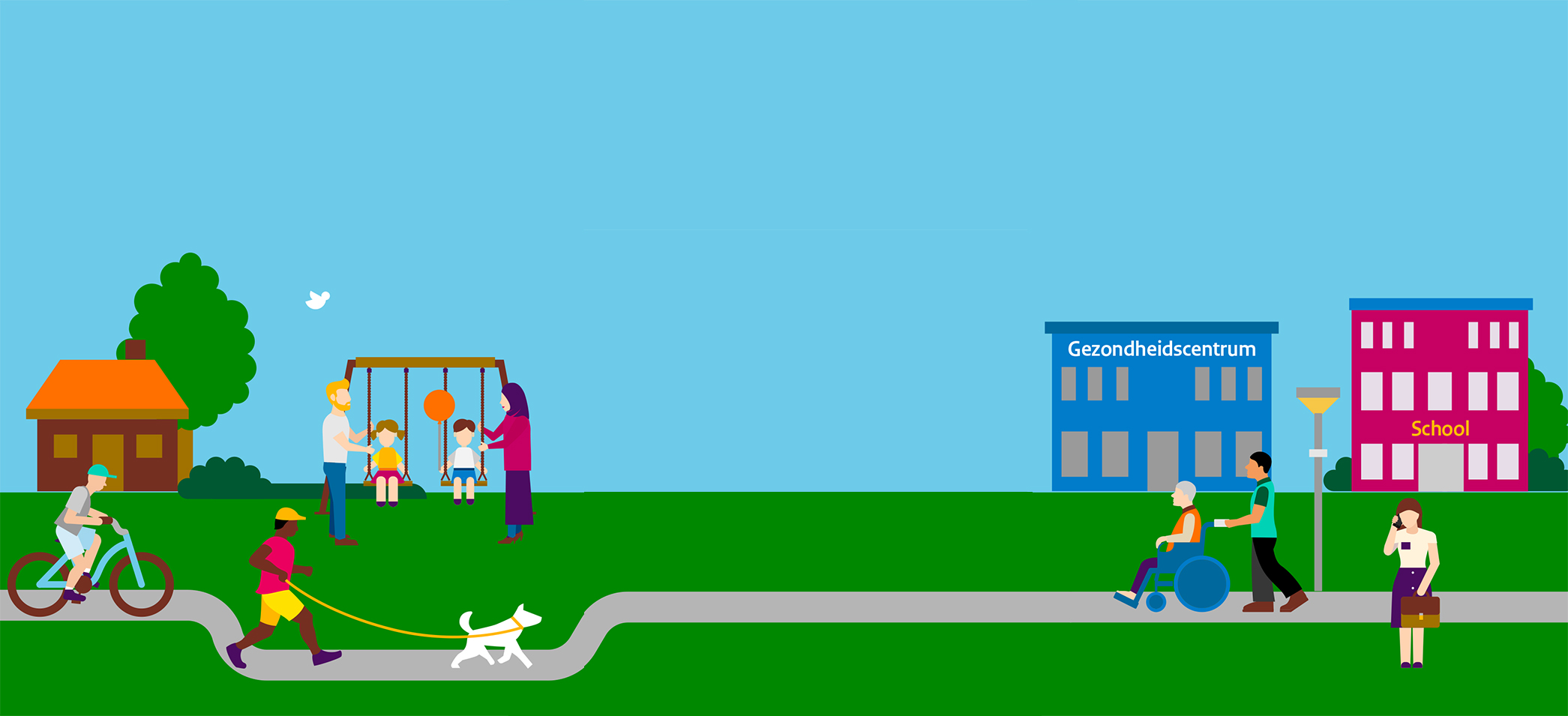Local combined action for better health

Prevention in the Neighbourhood
The number of people suffering from chronic conditions, such as diabetes and cardiovascular diseases, is increasing in the Netherlands. A healthy lifestyle is important in their prevention. Most workers in primary health care, including GPs, focus on encouraging a healthy lifestyle, but experience bottlenecks in deploying this form of prevention. The RIVM Centrum Gezond Leven (CGL; Centre Healthy Living), the Nederlands Huisartsen Genootschap (NHG; Dutch College of General Practitioners), the Landelijke Huisartsen Vereniging (LHV; Dutch Association of GPs), the Trimbos institute and Pharos have combined forces in the ‘Preventie in de Buurt’ (Prevention in the Neighbourhood) project. The objective is to reinforce prevention on a local level (in the area) by connecting the GP practice and public health.
‘Prevention in the Neighbourhood’ meetings
GPs, dieticians, Municipal Public Health Services, neighbourhood teams and others involved all play their own part in prevention in the neighbourhood. In practice, they hardly encounter one another, which prevents them from availing of each other’s expertise. In order to provide these professionals with the opportunity to meet and explore the options for collaboration, in 2015 nine regional networking meetings were held across the Netherlands. The underlying thought is that the key to a healthy and vigorous population is in collaboration in the neighbourhood. If social workers and residents join forces, residents feel healthier and participate to a greater extent.Initially, five meetings were scheduled, but due to the success, the project is being continued at the request of the Ministry of Health, Welfare and Sports. Regional partners, such as the Municipal Public Health Services and ROS (regional support structure) were actively involved in the organisation and inspiring regional examples took centre stage.Pim Assendelft, General Medicine Professor at the Radboud University in Nijmegen and ambassador for Prevention in the Neighbourhood outlined the options present for a connection of GPs and public health and well-being, and explained why this collaboration is not always obvious. His message: ‘Become acquainted with each other and each other’s world.’During the meetings, the participants received practical materials, such as an overview of interventions to be applied, the NHG-Zorgmodule Leefstijl and the ‘Gezonde Wijk’ infographic to use.
With over 800 participants, these meetings demonstrated that they meet a need. One of the participants formulated it as follows: ‘I have been in this workshop with fellow professionals for just two minutes and already know what they can do for me.’
Knowledge and materials
Inspirational local examples of collaboration between GP provision, public health and well-being have been combined on the Loketgezondleven.nl website, where you can also find material that supports professionals in deploying lifestyle interventions and collaboration in the neighbourhood. It includes an overview of lifestyle interventions with e and m-health and a Gezonde Wijk (Healthy Neighbourhood) infographic.The Healthy Neighbourhood infographic was developed because there was a demand for systematic collaboration at neighbourhood level between the various professionals who work there, each with their own objectives, qualities and plans. The infographic clarifies the steps that must be taken in a neighbourhood to achieve an integral plan in conjunction with the residents. The plan functions as a guideline to obtain insight into the health situation in the neighbourhood, to establish priorities and objectives and to determine the activities that are required and who can play a role in this.
